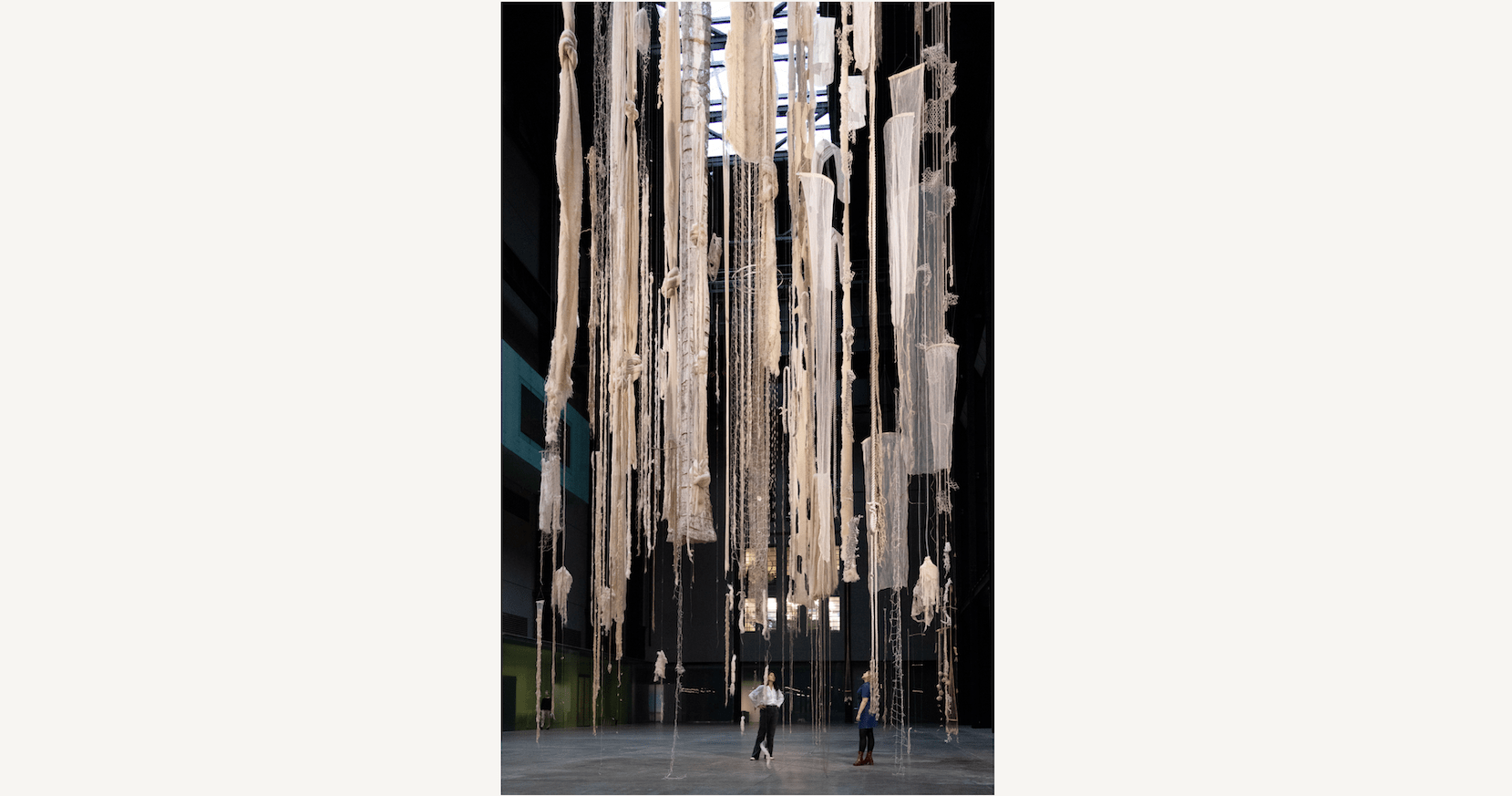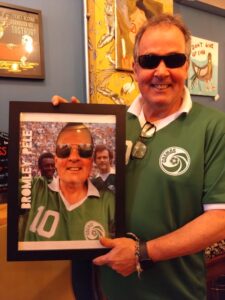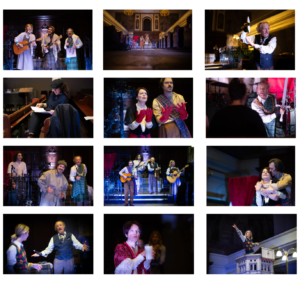The two bone-white sculptures hanging in the Turbine Hall appear at first like ghostly remnants reclaimed from the shore. Made from unspun wool, objects reclaimed from the Thames, twisted rope and distorted cardboard they are a continuation of artist Cecilia Vicuña’s work with the ancient quipu, writes Madeleine Kelly.
The quipu was used by the ancient Andeans to communicate, instead of writing they used knots tied into strings to record everything from statistics to stories. The meaning of this knotted code was lost during the European Conquest when quipus were systematically destroyed but their symbolic capacity endures.
Brain Forest Quipu stands as an elegy for destroyed forests and the Indigenous peoples who dwell with them and in them. It is a multi-layered exhibit, both material and ethereal. It starts with the sculptures themselves, or ‘Dead Forest Quipu’. From them comes the sound of Andean pipes, an 8-hour composition by Ricardo Gallo that is at times haunting and then jubilant. The final quipu is supposedly that of ‘Encounters: Rituals and Assemblies’; in it Andean tradition is connected to contemporary culture and finally to the viewers.
Vicuña’s work is mammoth in its intended reach but not in physical scale. The skeletal forms at each end of the Turbine Hall are dwarfed by the sheer size of the space. In this space, the sculptures call to each other across the hall like the last of their kind. From a distance, these figures even look forlorn. But once you’ve entered the hangings, a world opens up. Driftwood and shells hang close enough to touch and up above you the wool sheet, snakeskin-like cardboard and tattered nets resemble a torn canopy.
The longer you are there the more details reveal themselves. What was underwhelming on first sight becomes an intimate world in which you find yourself increasingly enmeshed. Gallo’s sonic creation brings the forms to life making them breathing beings that expand further into the large room. In the end the willing viewer finds themselves moving with the piece as Vicuña intended, a part of the social quipu. In this way you become a part of its act of mourning, an act that quietly suggests there is still life in this loss.
The exhibition has sat with me all week – in the end, I think, though quiet, it is haunting.
Tate Modern, Bankside, SE1 until 16 April 2023.
Open daily 10.00 – 18.00 and until 22.00 on the last Friday of each month. Admission: Free.






